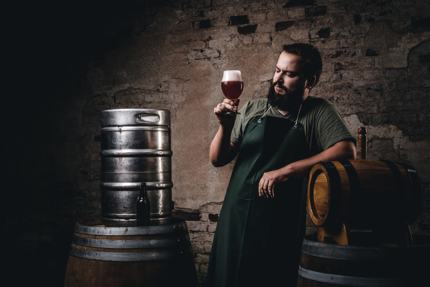Craft beer is taking the world by storm, but what actually differentiates a craft beer from a normal one?
The craft beer revolution came about a decade ago, during the time when we, the consumers, were increasingly interested in knowing where our food comes from and how our clothes are made and so on. We were growing tired of homogenised products glamorised by big-budget advertising campaigns. We wanted to challenge the norm. During this discovery process, we realised that there were still artisan brewers who would use time-honoured brewing techniques to produce small selections of beer where economies of scale did not necessarily apply.
The financial crisis in 2007-2008 also played a part. Suddenly we were all so much more aware of what we were spending and in turn, far more interested in whether a brand or company was worthy of our precious cash.

Just as we wanted to know so much about the products and the services we were using, we were being ushered into the smartphone era where we could learn so much at the touch of a button. Seemingly overnight, products that could demonstrate they have true authentic values – meaning they are homemade, environmentally sustainable and ethically produced – made us realise our choices could help hardworking artisans and also the planet.
So when more and more local brewers started opening up making batches of local beer, we made the decisions to embrace and support them.
What is a craft beer?
In a nutshell, craft beer is:
- A brew that is made by a small, independent business in their own brewery or someone’s premises to make small batches of beer.
- It is authentic beer made from hops, barley and water. It is also possible to add other ingredients to create unique flavours. However, the brewers should not substitute barley or malt with rice or corn.
- It is transparent about what ingredients are in the beer.
- It usually (but not necessarily) has bolder flavours.

The US leading the way
The craft beer movement started in the US in the 1980s where they already had a strong tradition of local breweries producing beers just for their town or community. Some examples include Boston Beer in Massachusetts (1984), Bell’s Brewery in Michigan (1985) and Deschutes Brewery in Oregon (1988), to name but a few. In the 1990s, when the craft passion gained momentum, these breweries had the opportunity to start spreading their wings, while not getting too big for their boots at the same time.
The latest figures show that in 2018, craft breweries contributed US$79.1 billion to the US economy, directly responsible for more than 150,000 jobs.
The scene is also rapidly changing. Oregon was once crowned the craft beer capital of the United States because it had the most craft breweries, but California quickly overtook the glory. Just as we thought the dust has settled, Forbes published an article in January 2019 that put Vermont as the craft beer capital because it has the most breweries per number of residents – 11.5 breweries per 100,000 residents at least 21 years of age. States that we did not associate with craft beers are also becoming prominent players – New Jersey, Kentucky, Oklahoma, North Carolina, Virginia, New Hampshire, Minnesota, Connecticut and Taxes all registered more than 30% growth in the number of craft breweries from 2014 to 2018.
It is indeed apparent that our desire for craft beer is fuelling the trade.

Keeping it local
It isn’t just the USA that is swept with the craft beer revolution, craft breweries have been creeping up all over the world from Addis Ababa in Ethiopia to Siem Reap in Cambodia. Each and every brewery is passionate about brewing honest beers that they love while pushing the boundaries.
As consumers, we are no longer interested in the latest premium imported ale or lager made by large corporations. We want to know what the latest craft beer is and where they come from. We want to know the breweries and their stories. Craft beers, as they are often experiment-led, also tend to offer bolder flavours and wider styles. This translates to diversity, which in turn attract new customers like young and trendy females who once said that they didn’t like beer – or strictly speaking, they hadn’t found a style of beer they like – but now craft beers are giving them the opportunity to experiment.
So even if you have not been bitten by the craft beer craze yet, there could be a beer out there with your name on it – you just need to go and find it.

If you liked this article, you might also like:






